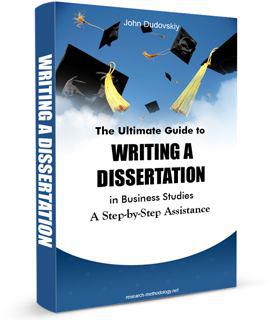Research Structure
Research structure is basically an outline of your paper. In your dissertation you are expected to provide the research structure towards the end of introduction chapter. The components of research structure are illustrated in table below:
| Chapter | Components |
|
Introduction |
Introduction of research problem |
| Discussion of research background | |
| Research aims and objectives | |
| Rationale for the study | |
| Research structure | |
|
Literature review |
Definitions of main terms |
| Explanation of secondary data search strategy | |
| Critical analysis of major models, theoretical frameworks and thoughts | |
|
Methodology |
Research process |
| Research philosophy | |
| Research design | |
| Data collection methods and their application | |
| Sampling | |
| Findings | Primary data presentation |
| Brief discussions | |
| Discussions and analysis | In-depth discussions and analysis of primary data |
| Comparisons of primary data to secondary data findings | |
|
Conclusions |
Discussion of achievement of research aim and objectives |
| Limitations of research | |
| Scope for future studies |
Components of each chapter in research structure
The following is a sample of a research structure:
Chapter One communicates the purpose and focus of the study and explains the outline of the research. This chapter includes a brief explanation of the research background, and provides rationale for the selection of the research area. Moreover, the first chapter contains explanation of the research aim and objectives, and explains research structure.
Chapter Two constitutes a literature review, and accordingly, contains analysis of models and theoretical frameworks that have been previously introduced to the research area. This chapter contains definitions of main terms and explains search strategy for the secondary data. Viewpoints of other authors regarding the research area in general and research problem in particular have been presented in a logical manner in this chapter.
Chapter Three addresses methodology. The chapter explains the research process and addresses the issues of research philosophy. Moreover, methodology chapter contains explanation of research design, and the choice and implementation of data collection methods. Sampling aspect of the study and discussions of ethical considerations are also included in this chapter.
Chapter Four contains presentation of the primary data collected through questionnaires/interviews/focus groups/observation/etc. Presentation of primary data findings have been facilitated through bar charts/pie charts. Brief discussions have been included to explain each chart.
Chapter Five constitutes discussions and analyses. This chapter plays a critical role in the achievement of research aim and objectives. Findings of the literature review have been compared to primary data findings in this chapter. Also, in-depth discussions have been provided in relation to each individual research objective.
Chapter Six concludes the work and summarises the level of achievement of research aim and objectives. The chapter comprises acknowledgement of limitations of the study and highlights scope for future studies in the same research area.
Your dissertation has also to contain title page, acknowledgements, abstract, table of contents at the beginning. Furthermore, you need to add references, bibliography and appendices sections at the end of your dissertation.

 My e-book, The Ultimate Guide to Writing a Dissertation in Business Studies: a step by step assistance offers practical assistance to complete a dissertation with minimum or no stress. The e-book covers all stages of writing a dissertation starting from the selection to the research area to submitting the completed version of the work within the deadline.
My e-book, The Ultimate Guide to Writing a Dissertation in Business Studies: a step by step assistance offers practical assistance to complete a dissertation with minimum or no stress. The e-book covers all stages of writing a dissertation starting from the selection to the research area to submitting the completed version of the work within the deadline.
John Dudovskiy
